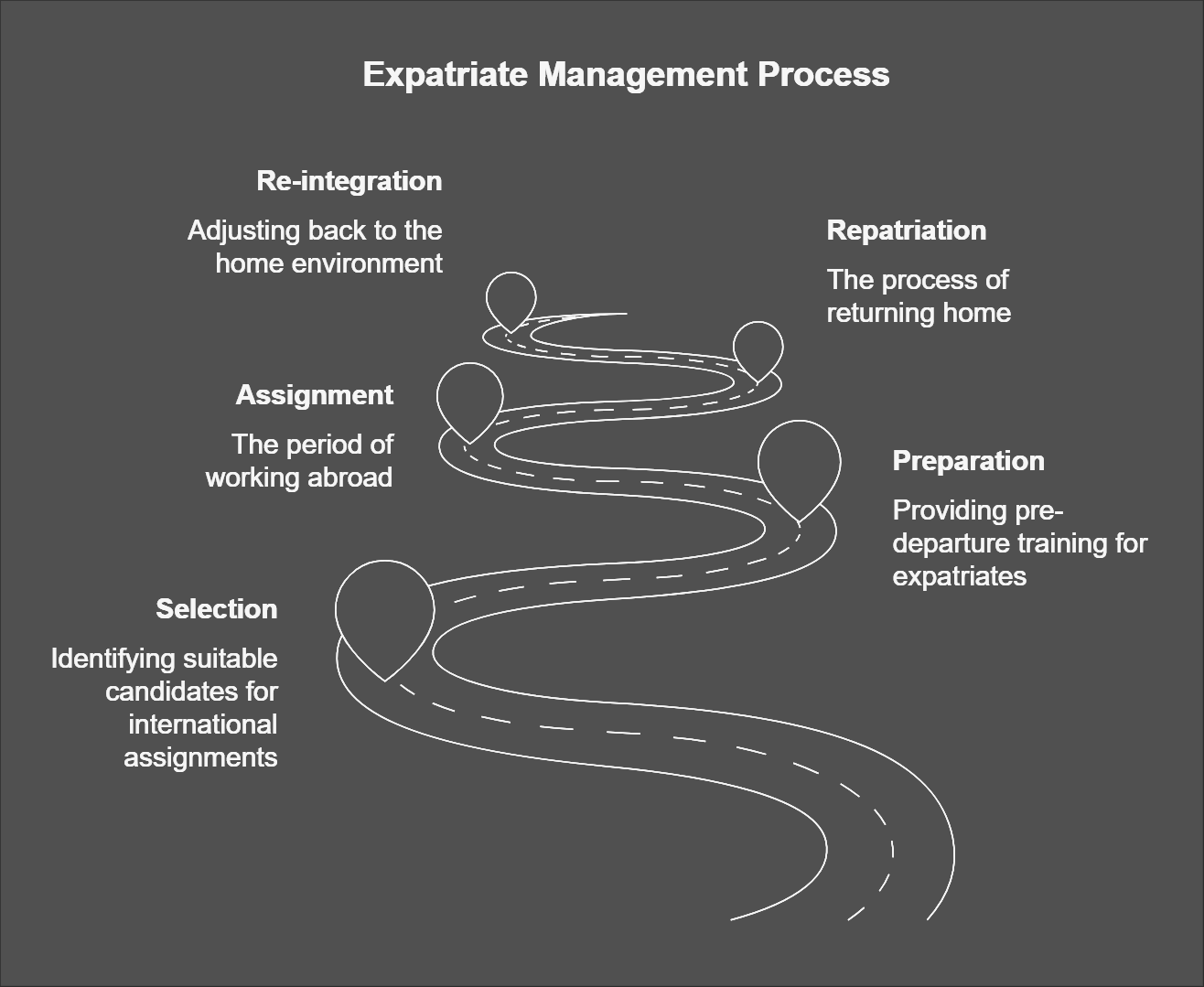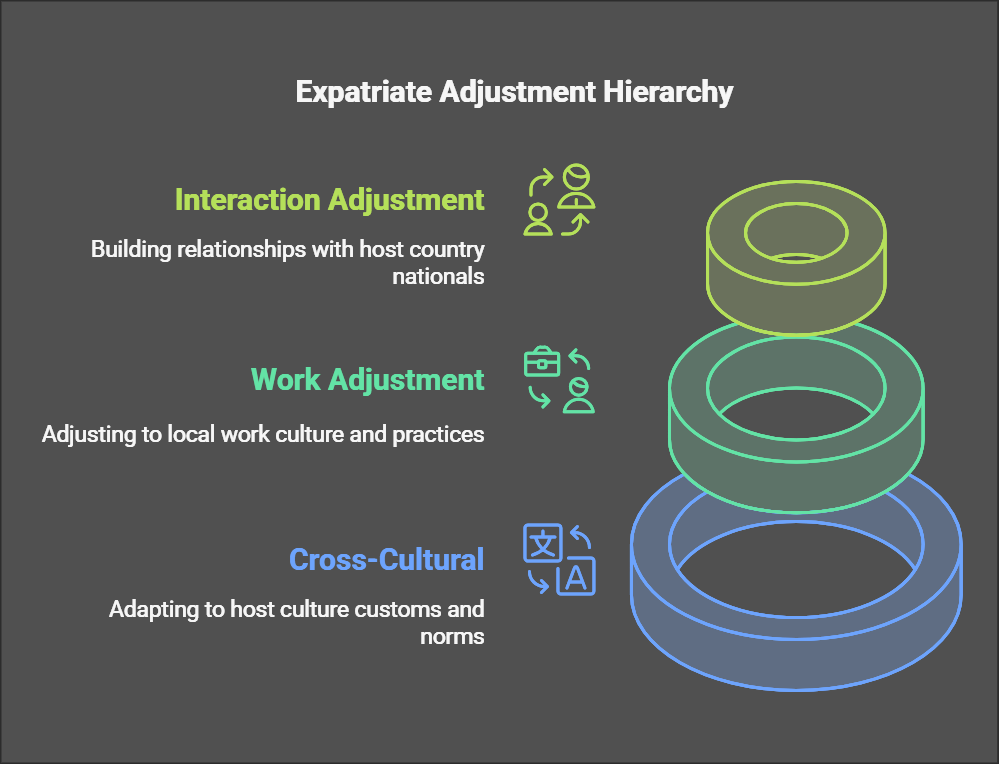5. Process and Dimensions of International Transfers
Process and Dimensions of International Transfers
International transfer, the movement of resources across national borders, is a complex process influenced by various dimensions. Understanding both the procedural steps and the key factors shaping these transfers is crucial for businesses and organizations operating globally. This document outlines the typical process involved in international transfers and the key dimensions that impact their success.
I. The Process of International Transfers
While the specific steps can vary, the general process of international transfer typically involves these key stages:
1. Strategic Assessment and Planning
- Market Analysis: Conducting thorough research of the target market to understand demand, competition, consumer behavior, and local regulations.
- Objective Setting: Clearly defining the goals of the international transfer, whether it's market expansion, resource acquisition, or efficiency improvement.
- Mode of Entry Selection: Choosing the most appropriate method of transfer (e.g., exporting, licensing, joint venture, foreign direct investment), based on the company's resources, objectives, and market conditions.
- Risk Assessment: Identifying potential risks, including political instability, currency fluctuations, and legal uncertainties.
- Resource Allocation: Determining the necessary financial, human, and technological resources for the international transfer.
2. Operational Planning
- Supply Chain Design: Developing a logistical plan for the movement of goods, materials, or services across borders.
- Financial Planning: Establishing budgets, securing financing, and developing currency exchange strategies.
- Human Resource Planning: Recruiting, training, and managing international staff, including addressing cultural differences.
- Legal and Regulatory Compliance: Ensuring compliance with all relevant national and international laws, regulations, and trade agreements.
3. Implementation and Execution
- Transfer of Resources: Physically moving goods, capital, or personnel across borders according to the developed plans.
- Establishment of Operations: Setting up facilities, distribution channels, and local offices in the target country.
- Communication and Coordination: Maintaining clear communication with all stakeholders, including internal teams, local partners, and external suppliers.
- Project Management: Effectively managing the project timeline, budget, and resources.
4. Monitoring and Control
- Performance Evaluation: Tracking key performance indicators (KPIs) to assess the success of the international transfer.
- Risk Management: Continuously monitoring for potential risks and developing contingency plans.
- Adaptation and Adjustments: Making necessary adjustments to the plan in response to changes in the market, environment, or operational performance.
- Knowledge Transfer: Capturing and transferring knowledge gained from international experience to other parts of the organization.
II. Dimensions of International Transfers
The dimensions of international transfers are the key factors that shape the complexity and success of the process. These dimensions can be broadly categorized as:
1. Cultural Dimensions
-
Hofstede's Cultural Dimensions:
- Power Distance: The extent to which less powerful members of a society accept and expect unequal power distribution.
- Individualism vs. Collectivism: The degree to which individuals prioritize personal goals or collective group goals.
- Masculinity vs. Femininity: The emphasis on achievement, assertiveness, and material rewards (masculinity) versus cooperation, caring, and quality of life (femininity).
- Uncertainty Avoidance: The level of tolerance for ambiguity and uncertainty within a society.
- Long-Term vs. Short-Term Orientation: The focus on future rewards and perseverance (long-term) versus immediate gratification and tradition (short-term).
- Indulgence vs. Restraint: The extent to which people allow or suppress gratification of their basic human drives.
- Impact: Cultural differences affect communication, management styles, employee motivation, and consumer preferences, requiring adaptation to local customs and values.
2. Economic Dimensions
- Economic Development Level: The stage of economic development of the target country (developed, emerging, developing), influencing infrastructure, consumer purchasing power, and investment opportunities.
- Economic Systems: The economic system of the target country (market-based, command-based, mixed), affecting market accessibility, price controls, and property rights.
- Market Size and Growth: The size of the market and its growth potential, influencing potential revenues and market share opportunities.
- Exchange Rates: Fluctuations in currency exchange rates, impacting profitability and pricing strategies.
- Inflation and Interest Rates: Macroeconomic factors influencing cost structures and financial planning.
- Impact: Economic conditions influence the profitability, feasibility, and sustainability of international transfers, requiring careful analysis of market dynamics.
3. Political and Legal Dimensions
- Political Stability: The level of political stability and risk of government instability, which can affect business operations and investment security.
- Legal and Regulatory Environment: The legal system, intellectual property protection, and regulatory frameworks, influencing contracts, operations, and liability.
- Trade Barriers and Tariffs: Government-imposed barriers to trade, impacting costs and market access.
- Government Policies and Incentives: Policies supporting or discouraging foreign investment, influencing company decisions.
- Corruption and Bureaucracy: Levels of corruption and bureaucratic hurdles, affecting transparency and efficiency.
- Impact: Political and legal factors create risks and opportunities for international transfers, requiring companies to be aware of local regulations and navigate potential challenges.
4. Technological Dimensions
- Technological Infrastructure: The availability of reliable technology infrastructure, including internet access, communication networks, and transportation systems.
- Technological Skills: The level of technological expertise within the local workforce, affecting production efficiency and innovation.
- Technology Transfer: The process of transferring technology, knowledge, and skills to the local market.
- Digitalization and E-commerce: The adoption of digital technologies and e-commerce practices in the target market, influencing distribution and sales channels.
- Impact: Technology plays a crucial role in the effectiveness and efficiency of international transfers, requiring adaptation to local technological infrastructure and digital literacy.
5. Geographic Dimensions
- Physical Distance: The geographical distance between the home country and the target market, impacting transportation costs and communication.
- Climate and Geography: The climate and geographic conditions of the target country, affecting infrastructure and logistics.
- Natural Resources: Availability of natural resources in the target country, influencing production and investment decisions.
- Transportation Infrastructure: The availability and quality of transportation infrastructure (roads, ports, airports), impacting logistics and supply chain efficiency.
- Impact: Geographic factors influence logistics, transportation costs, and operational considerations, requiring tailored strategies based on location.
Conclusion
International transfers are complex undertakings requiring careful planning and consideration of various dimensions. Understanding the process involved and the cultural, economic, political, technological, and geographic factors at play is crucial for achieving successful international expansion. By thoroughly analyzing these dimensions and adapting their strategies accordingly, companies can effectively navigate the complexities of the global marketplace and capitalize on the opportunities that international transfers offer.


